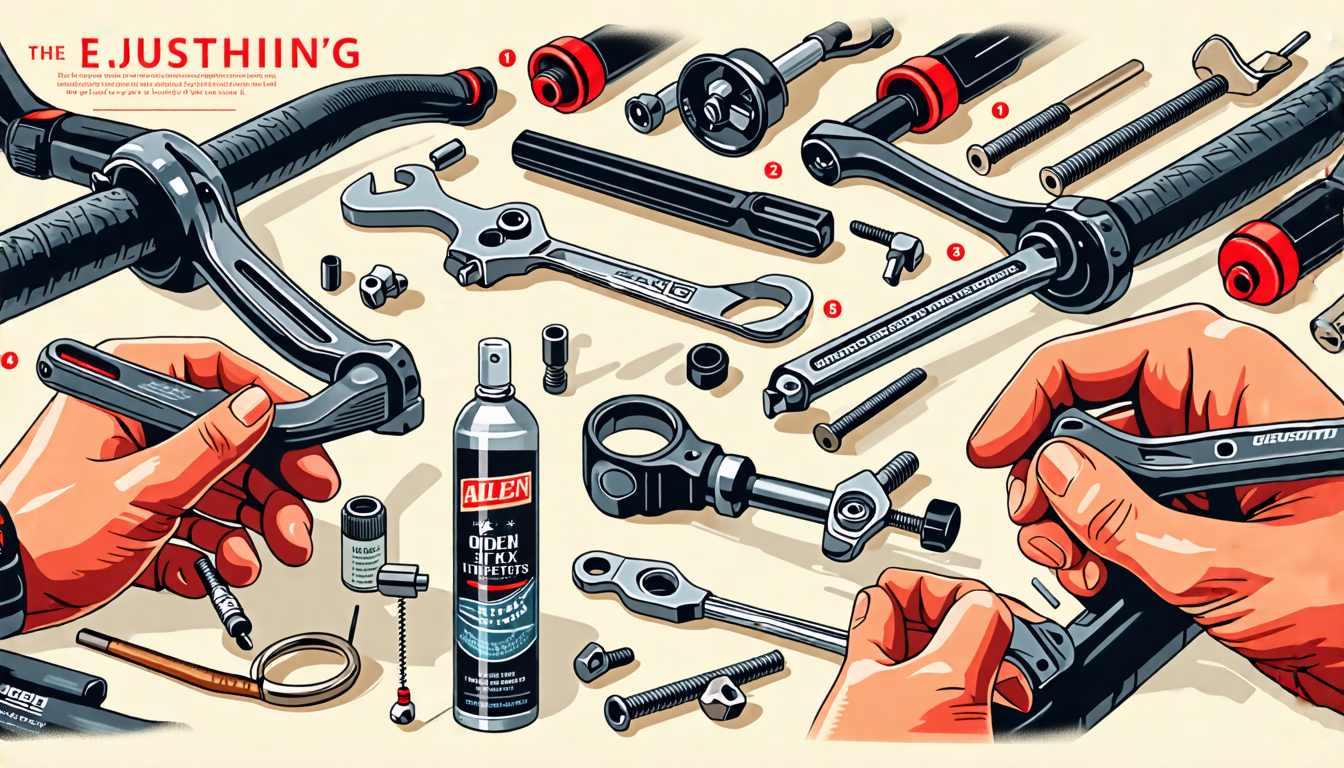In the realm of fitness, precision and customization play pivotal roles in maximizing performance and ensuring longevity in your fitness journey. One often overlooked yet critical element is the proper adjustment of fitness bars. Whether you’re gripping handlebars on a bike or hoisting a barbell in the gym, having your bars set up correctly can make a significant difference in your workout efficiency and overall comfort. Properly adjusted bars not only enhance your performance by ensuring optimal body mechanics but also help in preventing common injuries that arise from improper alignment and usage.
Understanding the importance of properly adjusted bars is the first step towards a more effective and safer workout routine. Ill-adjusted bars can lead to a multitude of problems such as muscle strain, joint pain, and even long-term injuries that could sideline you from your fitness goals. Therefore, taking the time to adjust your bars correctly is an investment in your health and performance.
In this comprehensive guide, we will walk you through a step-by-step approach to adjusting various types of bars to suit your specific needs. From the list of tools and equipment required for the adjustment process to detailed instructions for different types of bars, including handlebars in cycling and barbells in weightlifting, we’ve got it all covered. Additionally, we’ll provide essential safety tips and best practices to ensure that your adjustments are secure and effective, allowing you to focus on reaching your fitness milestones without any hitches.
Understanding the Importance of Properly Adjusted Bars
The Role of Bar Adjustments in Enhancing Performance
Whether you’re a seasoned athlete or a novice in the world of home fitness, the way your exercise equipment is set up can be the deciding factor between a productive workout and a frustrating experience. Properly adjusted bars play a crucial role in enhancing performance by ensuring that your body maintains the correct posture and alignment during exercises. This not only maximizes the effectiveness of your workouts but also reduces the risk of injury. For instance, in weightlifting, the accurate positioning of a barbell can facilitate optimal muscle engagement and leverage, allowing you to lift more effectively and safely.
Moreover, handlebar adjustments in cycling are vital for achieving efficient pedaling biomechanics. Incorrect handlebar height or reach can lead to inefficient power transfer, causing you to tire more quickly. On the other hand, a well-adjusted handlebar configuration aligns your body ergonomically, helping you maintain energy and produce consistent power output over longer periods. Additionally, proper adjustments can potentially improve your form and technique, allowing you to progressively increase the intensity and complexity of your workouts.
For those using functional fitness bars or multipurpose training bars, adjustments are equally important. These bars are often adaptable to various exercises, such as pull-ups, dips, and even some forms of advanced yoga. Adjusting these bars appropriately for different exercises helps in targeting the right muscle groups and ensures that you perform the movements correctly, which can lead to better results in strength, flexibility, and overall fitness.
Common Problems Caused by Improperly Adjusted Bars
Ignoring the proper adjustment of your fitness bars can lead to a host of problems, some of which can be detrimental to your overall progress and health. One of the most immediate issues caused by improperly adjusted bars is discomfort or pain. For example, if a barbell is set too high or too low during a squat, it can place undue stress on your lower back or knees, increasing the risk of strains and sprains. Additionally, improper placement of handlebars in cycling can result in wrist pain, neck strain, and lower back issues due to poor posture.
Another critical issue is the loss of efficiency in your workout. When bars are not set up correctly, your muscles may not engage as intended, leading to suboptimal performance. For instance, during a bench press, if the bar height is not aligned with your body’s natural movements, you might end up using smaller, ancillary muscles instead of the primary target muscles, which can hinder strength gains and muscle development. Similarly, in pull-up bars, incorrect height can either make the exercise too easy or too difficult, thus not providing the right level of challenge for muscle growth and endurance.
Safety hazards are another significant concern related to improperly adjusted bars. An unstable or poorly positioned bar can be dangerous, particularly when lifting heavy weights. The uneven distribution of weight can cause tipping, slipping, or even severe accidents such as dropped weights, which can result in serious injuries. In the context of multipurpose training bars, instability due to improper adjustments can cause falls or loss of control during exercises like dips or leg raises, posing considerable risks to your safety.
Lastly, incorrect bar settings can lead to a lack of motivation and decreased consistency in your fitness routine. When workouts become uncomfortable or painful, or when progress seems slow due to inefficient exercises, it’s easy to get discouraged. This may lead to less frequent workouts and eventually a decline in physical fitness and well-being. Properly adjusted bars not only make your workouts more effective but also make them more enjoyable, which can help you stay motivated and consistent in pursuing your fitness goals.

Step-by-Step Guide to Adjusting Bars
Tools and Equipment Needed for Adjustment
Adjusting bars for optimal use requires specific tools and equipment to ensure accuracy and safety. Here’s a list of essential items you’ll need:
- Allen Wrenches: These are often included with fitness equipment and are necessary for loosening and tightening bolts.
- Screwdrivers: Various types of screwdrivers may be needed depending on the equipment.
- Tape Measure: To ensure precise measurements when adjusting bar height and width.
- Level: A level tool helps ensure bars are balanced and even.
- Wrenches: Adjustable or specific-sized wrenches for securing nuts and bolts.
- Lubricant: To ensure moving parts operate smoothly and reduce wear.
Detailed Instructions for Different Types of Bars
Handlebar Adjustment in Cycling
Proper handlebar adjustment is crucial for comfort and efficiency in cycling. Here’s how to adjust them:
- Position Your Bike: Place your bike on a stable surface or use a bike stand for stability.
- Loosen the Clamp Bolts: Use an Allen wrench to loosen the bolts on the stem clamp. Be sure not to remove them entirely.
- Adjust the Handlebar Height: Adjust the height to your preferred level. A general rule of thumb is that the handlebars should be at the same height as the seat for optimal comfort.
- Adjust the Angle: Rotate the handlebars to find a comfortable angle for your hands and wrists.
- Tighten the Bolts: Once you find the perfect height and angle, tighten the clamp bolts securely.
- Test the Adjustment: Go for a short ride to ensure the handlebars are comfortably adjusted and secure.
Barbell Setup in Weightlifting
Setting up a barbell correctly is vital to safe and effective weightlifting. Follow these steps for the ideal barbell setup:
- Install Barbell Collars: Secure collars at both ends of the bar to keep weights in place.
- Adjust the Rack Height: Set the barbell rack to a suitable height. For bench presses, the bar should be at an easily reachable height when lying on the bench. For squats, the bar should be at shoulder height.
- Weight Plates: Carefully load the desired weight plates onto the barbell, ensuring even distribution on both sides.
- Check Stability: Ensure the barbell is securely placed on the rack and that the weights are evenly distributed and secured with collars.
- Smooth Bar Rotation: Confirm that the barbell sleeves rotate smoothly, as this indicates a quality bar which can reduce wrist strain.
- Mark Your Grip: Use chalk or tape to mark the positions on the barbell that correspond to your grip for consistency.
Safety Tips and Best Practices for Adjusting Bars
To maintain safety and maximize effectiveness when adjusting fitness bars, consider these essential tips and best practices:
- Check Manufacturer’s Guidelines: Always refer to the manufacturer’s instructions specific to your equipment to ensure proper adjustments and to avoid voiding warranties.
- Consistent Maintenance: Regularly check and maintain all bolts, screws, and moving parts for wear and tear. Lubricate as needed.
- Use Appropriate Tools: Avoid using incorrect tools that could damage the equipment or result in improper adjustments.
- Gradual Adjustments: Make incremental adjustments rather than major changes to find the perfect setting and to prevent injury.
- Securely Tighten Bolts: Ensure all bolts and clamps are firmly tightened to prevent any movement during use.
- Inspect Equipment Before Use: Always inspect your equipment before each use to ensure all adjustments remain secure.
- Use a Spotter: When dealing with heavy weights or complex adjustments, having a spotter can provide additional safety.
Adjusting your fitness bars appropriately will enhance your performance, comfort, and safety. By following these detailed guidelines and tips, you’ll ensure that your equipment is set up optimally, enabling you to achieve your fitness goals effectively.
In conclusion, the proper adjustment of bars, whether in cycling, weightlifting, or other home fitness activities, is pivotal in optimizing performance and preventing injuries. By correctly setting up your equipment, you can enhance the effectiveness of your workouts and ensure a safer exercise environment. Adjusting bars not only tailors your fitness equipment to your body’s unique dimensions and needs but also helps in maintaining correct form and reducing the risk of strain and discomfort.
The process of adjusting bars begins with understanding the type of bar you’re working with and having the necessary tools at hand. Equipping yourself with detailed step-by-step instructions specific to your equipment—such as handlebars in cycling or barbells in weightlifting—enables you to make precise adjustments. Adhering to safety tips and best practices during these adjustments further ensures that your setup is secure and reliable.
By investing time and effort in properly adjusting your bars, you set a solid foundation for achieving your fitness goals. Whether you’re an avid cyclist, a dedicated weightlifter, or an all-around fitness enthusiast, making these mindful adjustments can markedly improve your exercise outcomes, keep you injury-free, and enhance your overall training experience.

